#phylactery
Text
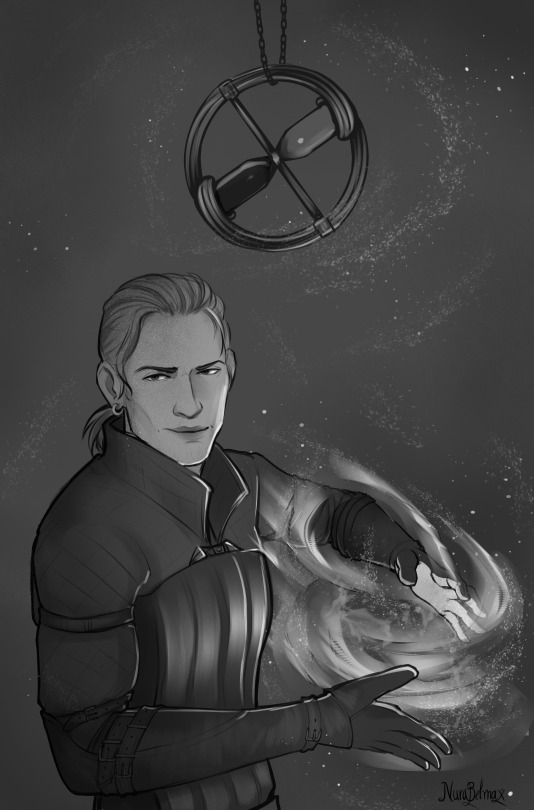
Day 22 - Phylactery
#dragon age awakening#Anders#anders dragon age#dragon age#dragon age art#art#dragon age promptober#dapromptober#da fanart#datober#Phylactery
660 notes
·
View notes
Text
Phylactery Ring of the Undying by Dragons & Stories
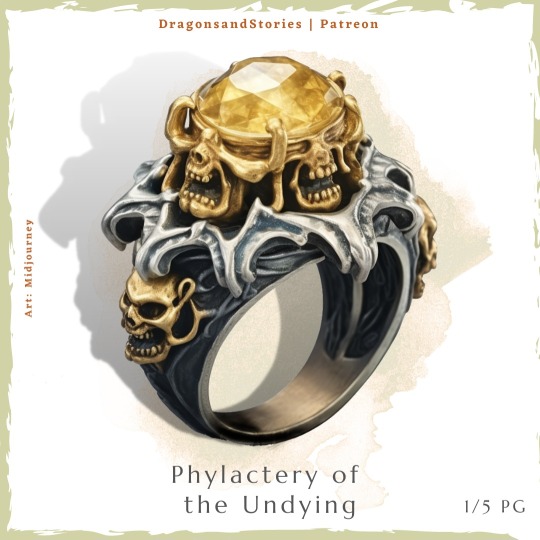
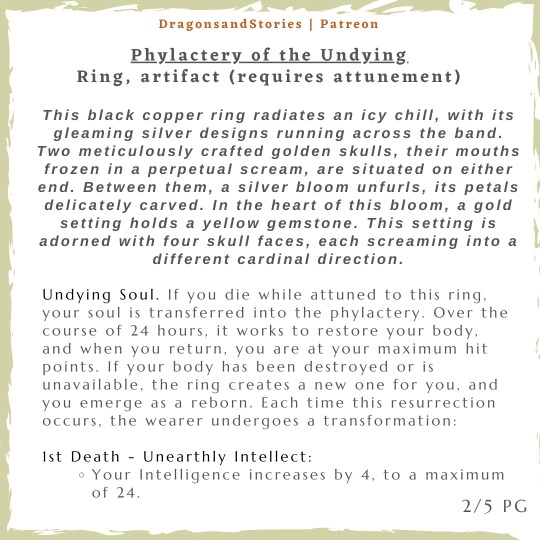
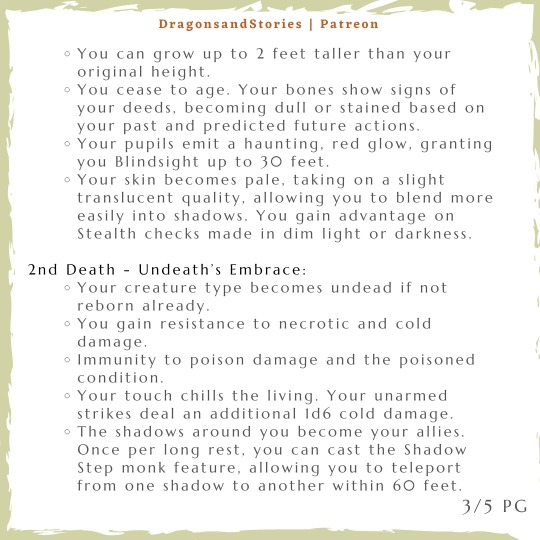



#dragons and stories#phylactery#ring#of the undying#rings#magic items#artifacts#artifact#undead#curse#curses#cursing#health#lich#necromancy#necromancer#scaling#strength and weaknesses#magic jewelry#dark#horror
46 notes
·
View notes
Text
Totally Original Thought:
Kinda hilarious that Easter landed on Trans Day of Visibility this year. Here's your regular reminder that if Jesus truly had a virgin birth, then he is almost certainly a trans man, personal identification notwithstanding.
And yes, I said "is" and not "was" because he was likely a powerful wizard (miracles) who, allegedly, turned himself into a truly immortal lich by making his phylactery "anyone who believes in me". Truly some fae-level rules lawyering. They do say he resides in anyone who believes in him, or rather, a piece of his soul does.
I for one, welcome our trans lich savior, whenever he shows back up 🏳️⚧️💀🧙♂️✝️
#easter#trans day of visibility#jesus#jesus christ#trans man#lich#phylactery#savior#mother mary#virgin birth#wizard#miracles#fae#faerie#fae folk#rules lawyer#rules lawyering#believer#believers#god#christianity#lost in translation
15 notes
·
View notes
Note
could you go more into the antisemitism (or lack-thereof) of dnd phylacteries?
Sure!
Lichs are undead spellcaters in DnD, who store their souls in phylacteries (or rather a phylactery each).
Phylactery is also the English word for Teffilin, which makes the antisemitism connection clear.
Except Phylactery *doesn't mean Teffilin*
It means amulet/reliquary.
More specifically it is a worn item that contains a holy object.
Items containing pieces of saints were called phylacteries.
As were other worn religious amulets.
Now admittedly, that usage is now mainly historical.
But the core root of 'Locket/amulet which contains something holy' is the historical word, and an apt description of what the lich uses it for.
Combine that with 'no one really uses the word phylactery in or out of the Jewish community' (much like the English word for 'kippah' is 'skullcap' but you never hear that).
And calling it antisemetic is a stretch.
Throw on that even if it was ripped from teffilin, I still wouldn't call it antisemetic. look, they rip from every culture/religion, as long as they don't have "all phylacteries contain 4 holy verses the lich must have 2 of them, and wear them daily" I don't think it should qualify.
Finally, there are actual issues to deal with, rather than what dnd calls an in universe item.
But yeah, that is a brief background/rant on the issue.
20 notes
·
View notes
Text

Skeleton Hand clutching a reliquary of its own blood.
Pssssssssst hey over here! Commissions are open! Form Here
23 notes
·
View notes
Text
clown lich whose phylactery is their clown egg
7 notes
·
View notes
Text

ooolldd comission
#digtal art#original art#dungeons and dragons#digital art#art#lich#phylactery#tw: blood#blood#dnd commission#comission#dnd art#dnd oc#dnd campaign#dnd#dnd character
14 notes
·
View notes
Text
Mannimarco creates Isira, a highly complex living phylactery clone after stealing Divayth Fyr's secrets.
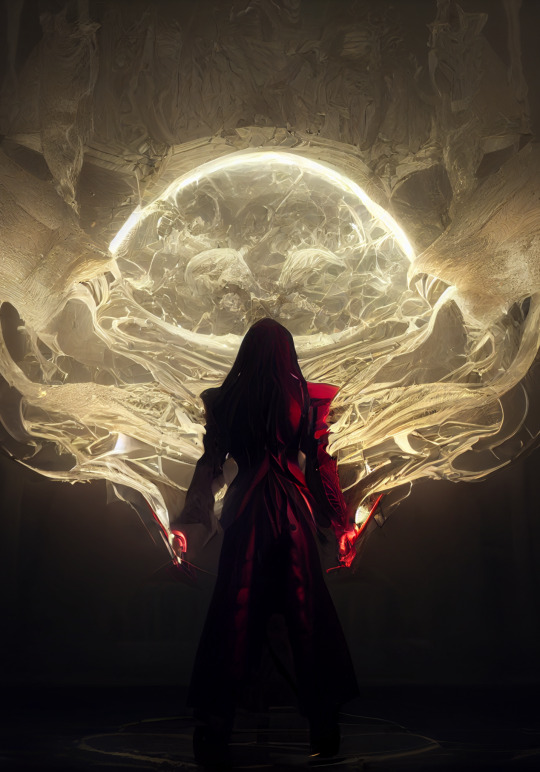
#3dnpc#interesting npcs#rumarin#rumarin 3dnpc#rumarin skyrim#fanfic#isirumarin#skyrim fanfiction#ldb#mannimarco and vanus#mannimarco#soul clone#phylactery
16 notes
·
View notes
Text
*Casually readjusts phylactery to a more comfortable position while no one is looking*
10 notes
·
View notes
Text
Person-core slivers are slippery, yes-yes!
Lils shall pin this one to a somewhat traditional phylactery, yes-yes, so a cremation pendant necklace!
And then Lils will choose an anchor-line to tie to it...
2 notes
·
View notes
Text
Beyond Death

The ancient dragon, Zoltar, had always feared death. He had heard tales of the dracoliches, powerful undead dragons that had transcended the limits of mortality. He had always dismissed the idea as nothing more than a fanciful legend, but as he grew older and the inevitability of his own death loomed closer, the idea became more and more appealing.
One day, Zoltar heard whispers of a powerful necromancer who claimed to have the knowledge to create a dracolich. Without hesitation, Zoltar set out to find this necromancer and offer him any treasure or power he desired in exchange for the ritual.
The necromancer, a twisted and evil being, agreed to the deal and led Zoltar to a dark and ancient ritual chamber. There, Zoltar drank a potion that brought instant death, but as his body fell to the ground, his spirit was ensnared by the necromancer's spell and transferred into a powerful phylactery.
When Zoltar awoke, he was no longer a living dragon but an undead dracolich. His body had been transformed into a skeletal form, his eyes glowing with malevolent energy. He was more powerful than ever before and no longer feared death.
But with this power came a terrible curse. Zoltar had severed all ties to his kin and the dragon gods, and was now driven to rule over all. He became a fiendishly intelligent tyrant, plotting and scheming to keep his existence a secret.
Zoltar's phylactery, a glowing gemstone, was his key to immortality. As long as it remained on the same plane as his undead body, he could return to it if ever destroyed. He could even take possession of another dragon's corpse and become a new dracolich. But if the phylactery was taken to another plane, his spirit would have nowhere to go and he would pass into the afterlife.
But for now, Zoltar was content with his newfound power and immortality. He would stop at nothing to become the ultimate ruler of all, even if it meant sacrificing everything he once held dear.
#dracolich#dnd#dungeonsanddragons#fantasy#flashfiction#undead#dragon#necromancer#ritual#phylactery#immortality#ruler#darkfantasy
6 notes
·
View notes
Text
Codex entry: The Creation of a Phylactery
“We let the boy rest, the first night they brought him to the White Spire, I convinced Knight-Commander Belrose to delay the ritual 'til the morning. The journey was long, and the lad could barely keep his eyes open, poor thing. I was certain escape was the furthest thing from his mind. Medine found him a clean cot in with the other young apprentices, and when I came in with his supper, he was already fast asleep.
In the morning, I showed Medine how the phial was to be prepared. First, a simple charm to preserve and protect the glass. Then a spell that to keep the blood from forming dark clots. The last step could only be completed with the apprentice present. I sent a young templar recruit off with the message that we were ready.
The boy was escorted to the chamber by Belrose himself. I could tell he had just been awakened. There was a smear of dirt from his face, perhaps from the road. I called the boy to me and cleaned his cheek with my sleeve as I explained the ritual. "We have to take your blood," I said. "Because you're special and we don't want you to be lost. If it happens, the blood will allow us to find you and bring you home again."
I let Medine take the lancet this time. The tremor in my hands was worse that day, and I didn't want to make too deep a cut. I held the boy close, and Medine made a small, neat incision on his palm, exactly as instructed. I felt the boy struggle and start to cry. He tried to pull away, but Medine gripped his hand firmly, letting the blood run into the phial.
Then Medine cast the spell, like we practiced. Within the phial, the blood churned, and grew bright in the presence of the mage to whom it was bound. It was done. Another phylactery, another link forged. He was leashed to the White Spire.
The boy could not look away from the glow. He was enthralled, and the pain and the tears were forgotten. "See? This is magic," I said to him. "When you are older, I will teach you." Belrose let the boy hold his phylactery for several minutes before he locked it away in the chamber.”
—From The Memoirs of Enchanter Reva Claye, 8:72 Blessed
3 notes
·
View notes
Text
I am sure all of my *checks notes* 4 followers? are familiar with the argument that was going around back in the day about whether or not lich's phylacteries were an anti-semetic trope.
I am firmly on the side of 'not anti-semetic'
(I am happy to discuss the topic, just not the topic exactly of the post)
As many people know (because the u.s. dominates the news cycle) Senetor Dianne Feinstein recently passed away.
As most people could guess, she was also Jewish.
Now, once she died there was the normal type of posts/comments on the subject.
Mainly in bad taste, but y'know, to be expected.
('finally', 'well I guess we are prying it from her cold dead hands' etc.)
They were by and large, just dickish, none particularly bad (for the internet/subject matter).
But one comment bugged me, 'I guess we finally destroyed that Lich's Phylactery'.
Do I think the dude who commented that was aware of the discussion about that topic?
No.
Do I think they were a definete anti-semite? Probably not. I could have checked the post history but I don't care enough to.
Do I think that comment actually crossed a line?
Yes.
Cause sometimes something can be neutral/borderline, but in a particular context, very very bad.
Not sure where I am going with this tbh.
Uh.
Z"L?
12 notes
·
View notes
Text
So I've been thinking about the fact that after a person dies, there are several options for the body to be put to rest, like the usual. Cremation and Coffins right? There are more unusual ways to be buried, like people dispersing ashes into the winds or into the ocean. And then there are real unusual ways that take the body and give it some function after death, like being buried at the base of a tree that gets planted, so for one, nature takes care of the body and secondly the tree has then parts of the person that is layed to rest at its base, within it. The person becomes part of the tree. Which is pretty poetic and a nice way to help nature as well as have a "tombstone" that is unique.
Ones ashes could also be put and made into live ammunition to be then shot out of a gun, which after i heard about it, didn't surprise me that it originated from the US, but it's also pretty unusual.
All that got me thinking about what to do with my own mortal shell once i am gone, which hopefully won't happen for at least another 50+ years.
There is a service that will make one's ashes into a diamond. Its made by applying a ton (figurative, its way more than a ton) of pressure to the ashes along with more carbon and possibly other minerals iirc to form a diamond of a specific ordered size and coloration. So that got me thinking about the applications for a diamond and the use of the term "family jewels". Like in many older movies there will be a moment where their is a mention of "oh these are the families jewels, heirlooms from our ancestors and grandparents" Plot twist: these diamonds are the ancestors. The countless precious gemstones that line elaborate necklaces and bejeweled earrings each have been a single person in their former life.
While this alone might be macabre for some, what if we take a fantasy setting. The people's souls are trapped within these crystallized shapes of their former bodies, granting the person who wears the jewelry some form of power. Like say a lich for example. What if a lichs phylactery was his remains compressed into a diamond where his soul resides, put into a circlet that the liches new undead body is wearing.
Swords right? Everybody loves them, Everybody has a favorite one, having a sword up on your wall instantly enhances the flair of any room. There was a post going around here on Tumblr talking about the amount of blood that it would take to make a sword out of the iron from said blood. Turns out it would take the blood of 500 or so people.
Vampire lord, summoning a sword from blood after a killing spree in a city. Or that lich we've talked about, maybe he made a similar sword and put the gemstone with his soul not onto a crown but into the hilt of the sword.
Now this is where i propose the idea: a persons body turned into a diamond. A sword smithed not from the blood of 500 people but maybe with a vial of blood from the former living person. The sword can be of the design that late person chose in life, maybe with a really nice engraving like "in life and in death still, i will protect the ones i love" and in the handle, maybe in the crossguard, the person-diamond is put into.
Imo its way cooler to have a sword be the tombstone as well as have the body right beside it. Also it's more awesome than an urn that just collects dust on the mantle.
Think about it: "oh nice sword you got there"
"yeah it is my grandma"
"you mean your grandmas?"
"No, this sword is made from parts of my grandmother. If anything, she always wanted us to be safe"
So anyway thanks for coming to my ted talk about funerals and Swords.
#tw death#cremation#death#funeral#blood mention#tw blood mention#Lich#phylactery#Swords#gemstones made from ashes#fantasy#dnd ideas
2 notes
·
View notes
Text
Awakening: Drake's Fall

[This is part of the series “Playing DA like an archaeologist”]
Drake's Fall is a series of ancient Tevinter ruins established over a chasm beneath the Dragonbone Wastes.
Legends speak that this is a place where dragons go to die. Tevinter built a city on the bones, and collected what remained of the primordial dragons. With these bones they crafted items.
The purpose to reach this zone is to go after the Mother: we come to a place with ancient Tevinter ruins that legends claim to be a graveyard of dragons.
Entering the zone immediately shows us the presence of Tevinter statues, as so far the pattern repeats itself all along these post series.

From a design point of view, we can be quite sure that this place indeed is as the legends say: a place where dragons came to die simply by seeing the amount of dragon bones everywhere.

The codex found here tells us that even when a dragon is dead, there is power coming from their bones, so the Tevinters made use of this power: they built these ruins here, where the draconic power kept emanating from the corpses, and they also used these bones to craft weapons and armours.
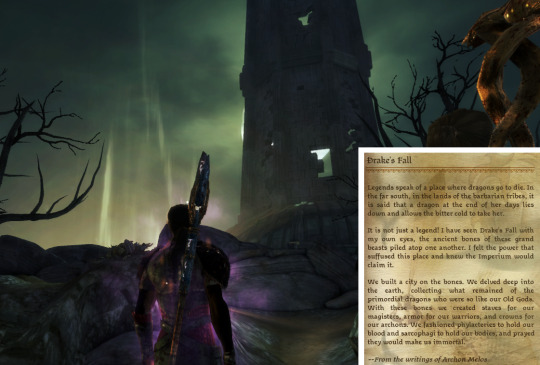
This codex brings a curious concept about phylacteries used here as a means for immortality, pretty much like a standard DnD lich. So far we know in DA lore, phylacteries are made with blood magic by the Chantry to track down mages that go rogue. However, we find in DAO another kind of phylactery: the dark ones, the ones that once broken, release a revenant. And Revenants are undead that are supposed to be made by the possession of a demon of pride or desire, so it's not so strange that in this codex, a Tevinter Archon uses the concept as a way to reach immortality.
There is yet another kind of phylactery, unique in game: the one that we find in DAO which contains the last knowledge about the arcane warrior arts. This phylactery works differently to the others in game, and it's related to elven magic. We also know that elven magic is usually associated with immortality or Uthenera. Maybe these Tevinter phylacteries are the Tevinter imitation of the elven ones, and Tevinter had its own way to reach its own Uthenera. After all, it's important to remember that Tevinter seems to have learnt/stolen all its magical knowledge from the elvhenan.
I'm not sure but probably this detail of Tevinter phylacteries associated with immortality will have more info in the book Tevinter Nights where conscious undead are introduced in the lore.
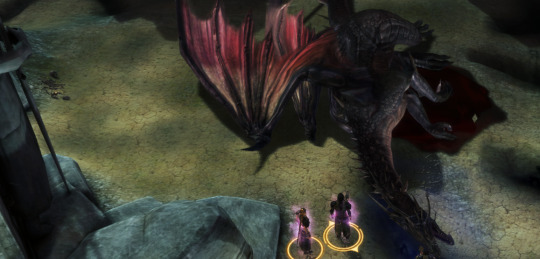
Coming back to the game, as we explore the place and reach The Mother, we find another high dragon here. I'm not sure if we can infer this is a guardian or another dragon that was waiting to die. I can't find any item that would help me to incline to one of the both hypothesis.
As we follow the path, we keep seeing in a consistent way all the statues and elements that the game has been pointing out as Tevinter, over and over. The same men yielding swords or staves.
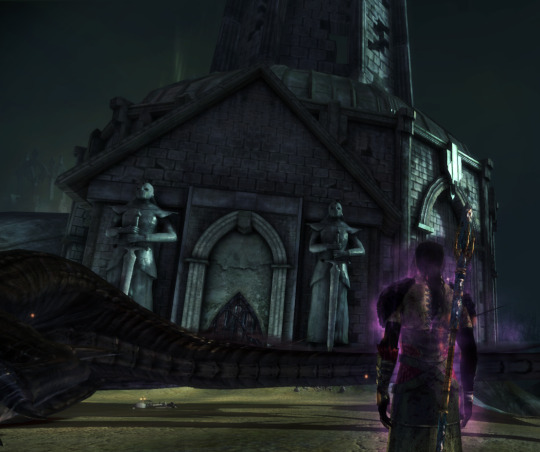
When we enter to the spiralled tower, we find floors with more Tevinter statues but this time with some patches of red textures and “tentacle”-like shapes.
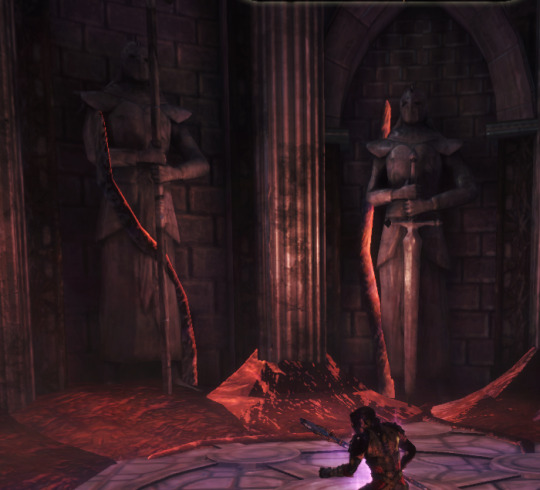

One could suspect this is, like in Kal'Hirol, another element that DA:A has provided us before being explicit about the presence of the red lyrium. Along these patches, we find “flesh pods” from where we can extract crystals with Tevinter runes that we can be used in diagram sockets on the ground
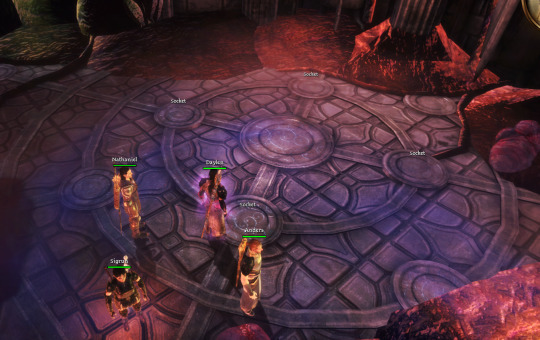
We have seen these diagrams in the Magi Circle of Ferelden and in the Fade, but they tend to be spiralled; the only place where it was not, was in the Blackmarsh. On each circular surface there are swirls that glow like lyrium, and for first time in the game, we are “told” that these circles are sockets to put enchanted crystals. [honestly, how much of this is just a mere re-use of elements I can't tell. I can't trust much the interpretation of these diagrams]
As we keep exploring the tower, we find more flesh pods

This could mean nothing, but in this bridge we see a dragon skull, from where this red stuff with tentacles (suspected to be red lyrium) comes up, and covers part of the bridge. On it, more of these flesh pods appear. They are different ones to the ones where the Children come up.
At some point we face the Architect.


from his speech we learn some lore concepts that those who read the book The Calling are not surprised to learn. These can be summarised as
Darkspawn seek the Old Gods out of a compulsion. They can't help it.
Darkspawns are not ambitious, they don't want power, it's all about the command of the Old Gods.
The Architect perfected a system where darkspawn can pass through a process similar to the one that Wardens undergo in order to acquire resistance against the call of the Old Gods. This last point is interesting because Avernus gave us a hint that he is having a second calling beside the usual one: one that makes him want to find answers in the Black City. Probably this is the only codex in DAO-DAA where we are told explicitly to link the Archdemons, who call the wardens during their waking time, with the forces residing inside the Black City, who continue the song during the time of sleep, and, one could imagine, closer to the Fade. This is a potential, interesting link about this duality we saw and was hinted, again, in the Blackmarsh: the material body of the Archdemons are dragons in the Deep Roads, their spirits are trapped in the Fade.
Once free from the call of the Old Gods, the darkspawn become sentient again: they think, speak, and act by themselves.
The mother has been freed by the Architect when she passed through this system. However, the lack of that song drove her mad.
The architect continues
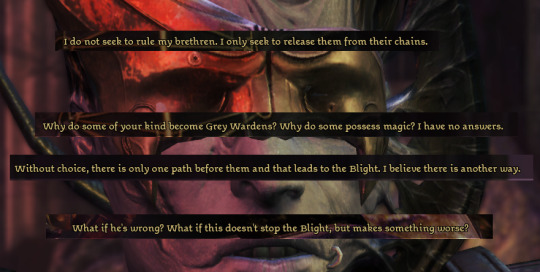
The Architect talks a lot about choices and compulsion and nature. In the book we know he has a sense of loneliness so I think his search for releasing his brethren from the effect of the song is not just mere altruism, it's also accompanied with a desire of finding company in his own kind. Or at least, what he thinks it's his own kind. We, players, are aware that the Architect is an ancient Magister like Corypheus, and we know from DA2 that Corypheus is more than a mere darkspawn.

After our encounter with The Architect, we find, oddly, a vestments of Urthemiel in a flesh pod: this is most probably a robe from a Tevinter worshippers who followed the archdemon that the Warden has just defeated in DAO? It seems a weird place where to find it.

Finally, we reach the lair of the Mother, where, again, we find the same elements we had been finding all over Kal'Hirol: what I'm supposed to think it's the first (silent) introduction of red lyrium in the games.

Again we find some red tentacles in this place that may be related to the “root”-like shape that red lyrium can acquire. We also see fallen ruins in the background, and some Tevinter statues. On that matter, at first I thought those structures were ruined Tevinter buildings, but if you look them carefully, some of them are upside down. The only place where I've seen something similar is in the Shattered Library, in DAI, which is a place in between the Fade and the waking world. What is this?
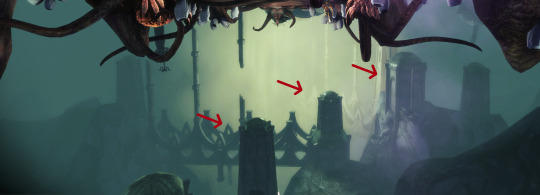
This zone, though, it’s not new. We could see it with some detail when we looked for Morrigan in the DLC. As it can be seen in the following images, it’s a place with a lot of dragon bones, Tevinter ruins, and a whole building upside-down

if we turn the image, it’s easier to see:

Anyways, this place is filled with flesh pods, which are also strange: we see that these things apparently develop closer to those red rocks (potentially red lyrium). It's strange because so far we knew in DAO, the broodmothers were female humanoids turned into darkspawn that only give birth to more darkspawn. Hespith and her song is a proof of it.
First day, they come and catch everyone.
Second day, they beat us and eat some for meat.
Third day, the men are all gnawed on again.
Fourth day, we wait and fear for our fate.
Fifth day, they return and it's another girl's turn.
Sixth day, her screams we hear in our dreams.
Seventh day, she grew as in her mouth they spew.
Eighth day, we hated as she is violated.
Ninth day, she grins and devours her kin.
Now she does feast, as she's become the beast.
Now you lay and wait, for their screams will haunt you in your dreams.
This, plus the Art of Thedas books give us a better explanation for this oddity:

It’s as we thought: darkspawn reproduce like mammals, the exception somehow is “The Mother”. Probably she is so special that her children come from pods instead of her womb, and the game silently hints us that this is caused by the presence of red Lyrium.
Then again, in Kal'Hirol we learnt that the Children, who are born within these flesh pods, are unusual darkspawn. Are the darkspawn changing because the presence of Red Lyrium? Can Red Lyrium corrupt even further the Taint carried by the Darkspawn? Or this is the result of The Mother’s resistance to the song? Once more, we cannot know if this is a mere reuse of graphical elements, or there is hidden lore here.
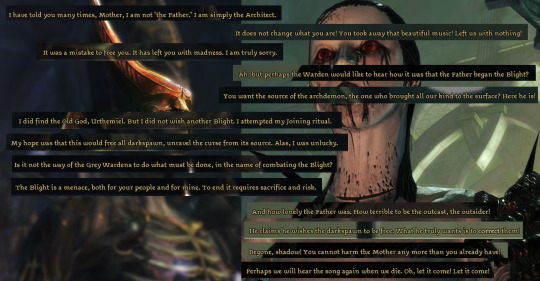
When we get closer, we can finally see The Mother first hand. From her we learn some little extra bits summarised as
Reinforced idea that the free darkspawn are mad because they stopped hearing the song.
Here it is addressed in the game for the first time that one of the other motivations for why the Architect is trying to free his people is because he feels lonely: an outcast. A detail that we only know if we read The Calling.
The Architect wants to correct the darkspawn [meaning, making them sentient so he won't feel like an outcast]

In the endings we can highlight that some wardens know that the Architect survival is a guarantee of a Blight, may be a hint to what we learnt in the book The Calling: The wardens had always known where each of the archdemons were sleeping. They even had a map. One of the wardens who knew this map by heart, was sent in his final quest into the Deep Roads to complete his Calling, but instead of dying, the Architect convinced him to work for him. So now, we know that the Architect has a detailed map of the underground with the location of the remaining archdemons, and since he is a darkspawn himself, he can travel these roads without fearing any attack. This is certainly a very bad news for the highest ranks in the Wardens who knows this info.
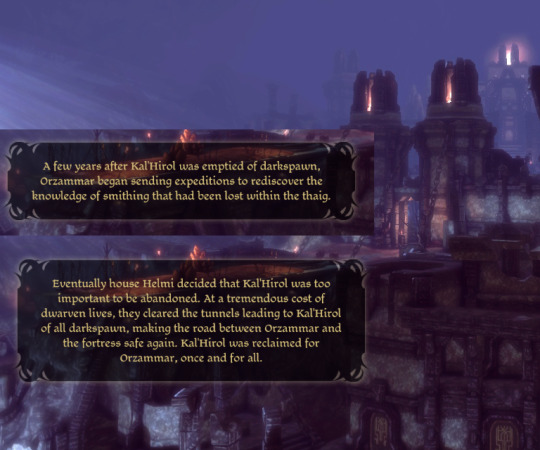
But so far the darkspawn are calm in the deep roads. The ending obtained for Kal'Horl says the same: the darkspawn are mostly gone. It is also in this epilogue where we can read that the dwarves ar exploring this particular Thaig, which was filled to the brim of red rocks. I dont know if this is a lore mistake [since it was always implied that the first discovery of Red Lyrium was made in DA2] but this also could mean that the red lyrium was accesible to Orzammar first, which developed a trade of it exclusively for Templars, and therefore, the wide spread of red lyrium problems in DAI
[Index page of Dragon Age Lore ]
#playing DA like an archaeologist#phylactery#dragon#Tevinter#the architect#Awakening#Blight#Darkspawn#Dragons#immortality#Old Gods#Taint#Archdemon#red lyrium
14 notes
·
View notes
Text
DM: Alright, you call the djinn Hammelat out of their bottle.
Tati (playing Seraph): I take a deep breath and say, "We wish for you to bring us the true phylactery of Larissa Firespit containing her immortal soul."
DM: Hammelat nods and says, "Very well." A few hours later-
Adam (playing Billie): Hours?? What a rubbish djinn.
Tati: He has to go dig for it, it could be anywhere in her tomb. Or not even in her tomb at all!
Adam: Still.
DM: A few hours later Hammelat returns with a very intricate ceramic box.
Adam: "Is this the real phylactery? No more decoys?"
DM: They say, "That is what you wished for, so that is what I had to do. I could not have returned until I had succeeded."
Tati: I'd like to make a Religion check on the box. Thaddeus too.
Hamish (playing Thaddeus): Okay.
Marijn (playing Godric): And an Arcana check.
DM: This box is boiling with dark magic. There's nothing else it could be.
Adam: I say to Hammelat, "Thanks. We'll call again if we need you."
DM: They disappear back inside the bottle. You have one wish left.
#funny#dnd#wishes#phylactery#Seraph#Billie#Thaddeus#Godric#Lyra DM#just little d&d things#ooc#NPCs#djinn#Hammelat#captain Firespit#lich#impatient#religion#arcana#travelling trauma centre
11 notes
·
View notes